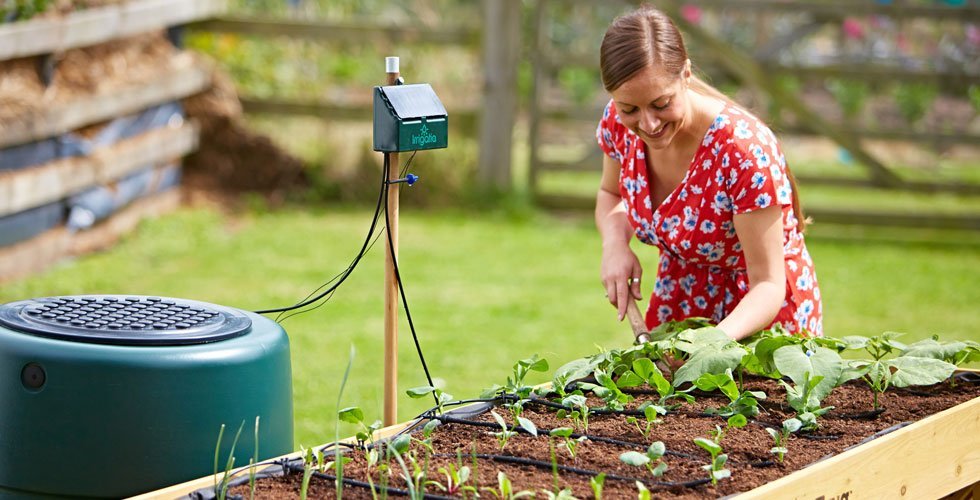Drip irrigation is a type of irrigation process that has high potential in conserving water. We, the Niagara solution, the drip irrigation service provider, successfully worked in 10000+ projects are readily available with good service for your agricultural automation needs. The drip irrigation process supplies water directly to the surface of the soil and the root preventing excess water flow. Most of the water is water over the surface; as the water supplied stagnates over the surface, approximately 40% of water gets evaporated. The remaining water will reach the root and the soil surface.
But, dripping water directly into the soil surface and root saves the remaining 40% of the water too. There are majorly two types of drip irrigation.
- Drip irrigation to the soil surface- water is supplied to the soil surface, minerals and nutrients will be absorbed by the root, and the soil will be moisturized.
- Drip irrigation to the root-water is supplied to the root directly; all the contents of water and excess moistures will be stored in the root. Then it will be distributed to the soil and other parts of the plants.
USES OF DRIP IRRIGATION:
- It conserves more water preventing evaporation.
- No excess water will be wasted on the soil surface. An equal proportion of water will be distributed to the soil and the root.
- Nutrients, minerals, and other potentials will be shared equally with the required parts of the body.
- The soil will always stay moisturized as the water is dripped. This protects root and soil from drying.
- Drip irrigation can be of different types. A suitable type can be chosen based on the types of plants and soil.
- As the emitters supply water to the root level, the moisture level is optimized, increasing productivity,
- Loss of fertilizer and nutrients is in no way placed in drip irrigation.
DRIP IRRIGATION IN COCONUT PALMS:
Coconut is a dry plant, and irrigation happens in summer. So it requires a large amount of water supply. More drips are also recommended to be placed as that benefits high productivity. Maximum four drippers are allotted per palm. Each dripper is to be placed in a separate pit. Coconut palm requires surface drip irrigation. The minerals and the nutrients to the soil must be concerned as the yield is based on the soil’s health. And coconut palm requires from about 55 litres to 120 litres every day.
Drip irrigation is the best way to conserve water and also to be prominent with the nutritional contents—drip irrigation results in 35%-40% high yield and productivity. Comparatively, high production can be achieved with good fertilizers at stable intervals.
Time intervals are to be observed and kept on track. For the first two years of planting, more water is needed to be supplied to the palm. Later it can be decreased. A proper schedule that maintains the amount of water supplied to each palm and the number of months are to be noted. Soil type can also influence the amount of water and quality of fertilizers.
Ensure that the soil is constant with moisture; it is a must for good quality and quantity yielding. Coconut palm produces nuts around the year. So make sure an adequate supply of water is supplied with high-grade fertilizers.
DRIP IRRIGATION IN COTTON PLANTS:
Cotton plants are highly affected by diseases. So maintaining cotton farms is challenging and concerning. But if proper provinces are laid, high-quality irrigation can be the fruit.
Root drip irrigation must be planned for cotton. Supplying water to the canopy is not highly recommended. Only roots need to be stable in moisture. The humidity level must be optimal, and fertilizers must be moderate. It is necessary to drive the level of water content. A high water supply is to have proceeded only for the first bloom. When the first-floor bolls open, the humidity and moisture level should be decreased. So the time intervals and the plant growth deviates from the irrigation system.
To create flexibility in plant yielding, choose the right type of cotton. Hybrid yields differ in type. The typical change can blend the agro-agricultural conditions.
Cotton requires a daily supply of water. An adequate amount of water is to be dripped per hour daily at consequent terms. Periodical irrigations must be followed with proper observance and time intervals.
FREQUENTLY ASKED QUESTIONS:
- How much water can be saved in cotton furrow irrigation?
It saves about 400 mm of water under furrow irrigation. The normal rate of water required is 900mm, but in-furrow irrigation, a maximum of 500mm is supplied.
- Is there automatic drip irrigation possible?
Yes, technological development paved the way for high brand advanced tools that can prevail good irrigation.
What are the best results of drip irrigation?
Water conservation and stable nutrients flexibility are the superiors results of drip irrigation. High productivity and less consumption of fertilizers come further.
Is Drip irrigation costly?
It depends on a certain phenomenon like the type of irrigation, the plant variety, quality of the soil, and the acres. But comparing to the manual wages, litres of water to the field, and fertilizer costs, it is highly cost-effective.
What are the tools used in drip irrigation?
Drippers are the prior dripping tools. Additional tools like hoses, pumps, watering cans, inverters can be selected to the requirements.
